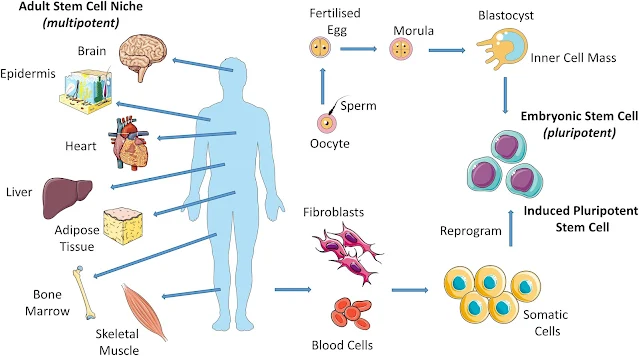Introduction
Over the past few decades, medical science has witnessed remarkable advances in regenerative medicine. Researchers have harnessed the potential of stem cells and tissue engineering to repair or replace damaged organs and tissues, offering new hope to patients with a wide range of medical conditions. This article explores the promising developments in the field and their potential to revolutionize healthcare.
Stem Cells: Nature's Master Builders
Stem cells are undifferentiated cells with the remarkable ability to develop into various specialized cell types. Researchers have uncovered the regenerative potential of these cells, making them a focal point in the quest to repair or replace damaged organs and tissues. There are several types of stem cells, including embryonic stem cells, induced pluripotent stem cells (iPSCs), and adult stem cells.
The Role of Tissue Engineering
Tissue engineering is another pivotal component of regenerative medicine. It involves the creation of functional three-dimensional tissues that can replace damaged or dysfunctional body parts. To achieve this, researchers utilize a combination of scaffolds, cells, and growth factors to encourage tissue growth and regeneration.
Cardiac Regeneration: A Heartening Prospect
The heart, with its limited regenerative capacity, has long been a focus of research in this field. Researchers are exploring the use of stem cells, particularly cardiac progenitor cells, to repair damaged cardiac tissue. Several studies have shown promising results in animal models and small clinical trials, raising hopes for patients with heart disease (Chong et al., 2014).
Neurological Repairs: Nerve-Wracking Challenges
Neurological conditions that result from tissue damage, such as spinal cord injuries, present complex challenges. Researchers are experimenting with various types of stem cells to promote neural regeneration. Recent studies suggest that neural stem cells and mesenchymal stem cells hold potential for repairing damaged neural tissue (Assinck et al., 2017).
Musculoskeletal Revival: Engineering New Bones and Cartilage
Musculoskeletal injuries, including bone fractures and cartilage damage, have seen advancements in tissue engineering. Researchers have used stem cells in conjunction with bioactive factors to regenerate bone and cartilage tissue. In the future, these approaches may provide more effective treatments for orthopedic conditions (Jiang et al., 2016).
Challenges and Future Directions
While the potential of stem cells and tissue engineering is immense, challenges persist. These include issues related to immune rejection, ethical concerns, and the need for large-scale clinical trials. Overcoming these hurdles is essential to ensure the safe and effective application of regenerative therapies.
Conclusion
The intersection of stem cells and tissue engineering is at the forefront of regenerative medicine, offering new hope for patients with organ and tissue damage. As research continues to evolve, the prospect of repairing or replacing damaged organs and tissues becomes increasingly attainable. The field holds the promise of not only improving the lives of countless individuals but also fundamentally changing the way we approach healthcare and medical treatment.
References:
1. Chong, J. J., Yang, X., Don, C. W., Minami, E., Liu, Y. W., Weyers, J. J., ... & Murry, C. E. (2014). Human embryonic-stem-cell-derived cardiomyocytes regenerate non-human primate hearts. Nature, 510(7504), 273-277.
2. Assinck, P., Duncan, G. J., Hilton, B. J., Plemel, J. R., & Tetzlaff, W. (2017). Cell transplantation therapy for spinal cord injury. Nature Neuroscience, 20(5), 637-647.
3. Jiang, T., Liu, W., Lv, X., Sun, H., Zhang, L., & Liu, Y. (2016). Repair of articular cartilage defects with intra-articular injection of autologous rabbit synovial fluid-derived mesenchymal stem cells. Journal of Translational Medicine, 14(1), 1-10.


Post a Comment
Full Name :
Adress:
Contact :
Comment: